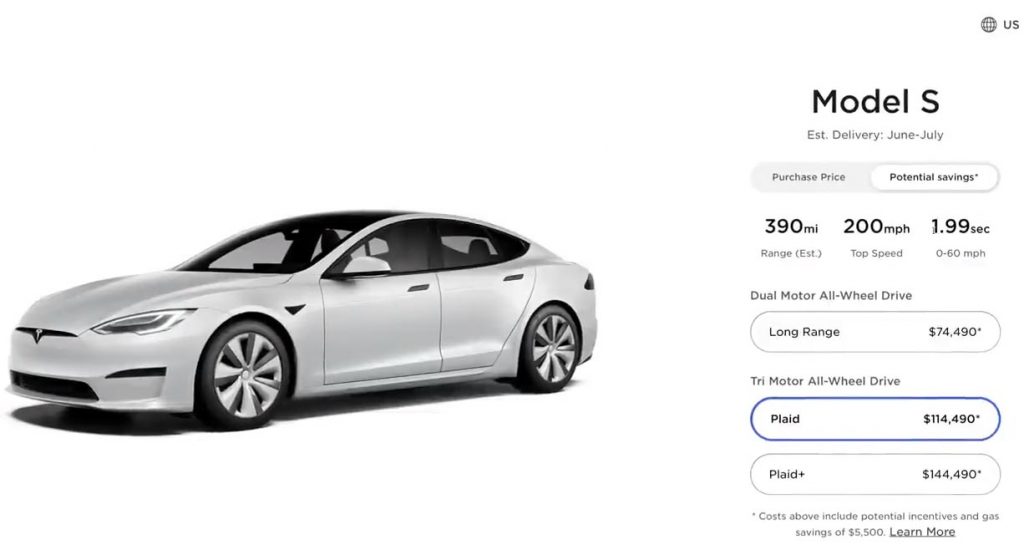Despite the occasional bouts of controversy, there’s no denying that Tesla has created some of the most impressive vehicles of this era. So impressive in fact, that they continue to be an industry benchmark for legacy carmakers looking to play catch-up in the EV sphere.
And if there’s one key takeaway that anyone who’s been in a Tesla at full pelt will attest to, it’s the acceleration. We’ve seen their four-door sedans and SUVs destroy lightweight, carbon fiber draped supercars with an unfathomable acceleration. Now, they’ve taken that one step further.
Tesla recently introduced the updated Model S that comes with some subtle exterior upgrades, bold changes to the interior, a redesigned battery pack for extended range and two tri-motor versions, the Plaid and Plaid+, with a combined output of 1,020 HP and 1,100+ HP respectively.
The Model S Plaid and Plaid Plus claim to have a 0-60 of 1.99 seconds or less, making them the fastest production car in existence. But do the Plaid models truly deliver on this claim? The truth is that this time comes with a caveat.
Also: Take A Look At How Tesla’s New Touchscreen Gear Selector Solution Actually Works
If you dig a little deeper and read the fine print of the Model S Plaid and Plaid+ it mentions that their 0-60 mph time is achievable if you exclude the first 1 foot of rollout. If you’ve ever been to a drag strip, you’ve probably seen the timing equipment beam across the tarmac, indicating from where the cars should launch. Now, according to Tesla, their 0-60 times start once the car has actually rolled out of this beam, giving you about a foot of extra acceleration time.
So why did Tesla try to mask this little detail? Jason Fenske of YouTube channel Engineering Explained reveals how the Model S P100D was able to accelerate from 0-5.9mph within this single foot, reducing 0.2 seconds from its overall time. This, in theory, means that if the same is applied to the Model S Plaid, we’re left with a 0-60 time of 2.1 seconds, as opposed to the previously claimed 1.9. Still fiercely fast, but not exactly as fast as advertised.
What can be considered misleading, though, is the fact that the rollout distance is included in the time quoted for the Long Range Model S. In what would appear to be a subtle marketing ploy, by including the rollout in the Long Range figure but not the Plaid and Plaid+, the gap between the models appears greater than it actually is – and, more crucially, the more powerful versions seem to dip below the 2-second mark for the 0-60 mph sprint.




